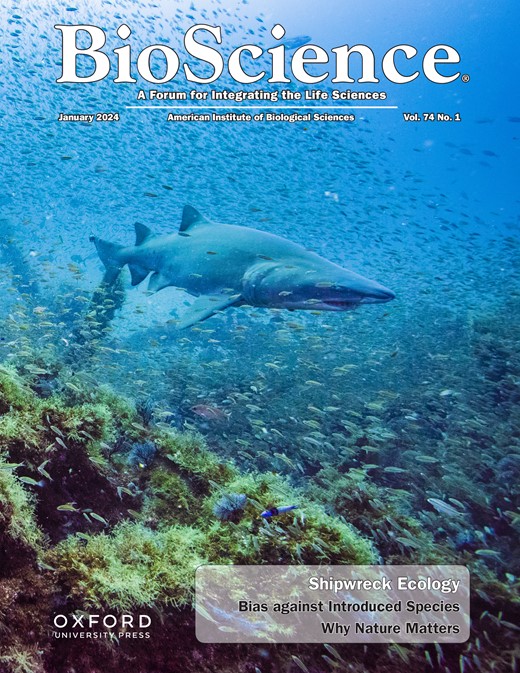Drought experiments need to incorporate atmospheric drying to better simulate climate change
IF 7.6
1区 生物学
Q1 BIOLOGY
引用次数: 0
Abstract
Climate models predict more frequent, prolonged, and extreme droughts in the future. Therefore, drought experiments varying in amount and duration across a range of biogeographical scenarios provide a powerful tool for estimating how drought will affect future ecosystems. Past experimental work has been focused on the manipulation of meteorological drought: Rainout shelters are used to reduce precipitation inputs into the soil. This work has been instrumental in our ability to predict the expected effects of altered rainfall. But what about the nonrainfall components of drought? We review recent literature on the co-occurring and sometimes divergent impacts of atmospheric drying and meteorological drying. We discuss how manipulating meteorological drought or rainfall alone may not predict future changes in plant productivity, composition, or species interactions that result from climate change induced droughts. We make recommendations for how to improve these experiments using manipulations of relative humidity.干旱实验需要纳入大气干燥,以更好地模拟气候变化
气候模型预测,未来的干旱将更加频繁、持续时间更长、极端天气更多。因此,在一系列生物地理情景中进行不同数量和持续时间的干旱实验,为估计干旱将如何影响未来的生态系统提供了有力的工具。过去的实验工作主要集中在操纵气象干旱方面:利用避雨棚来减少进入土壤的降水量。这项工作有助于我们预测降雨量变化的预期影响。但干旱的非降雨成分又是什么呢?我们回顾了近期关于大气干燥和气象干燥同时发生且有时相互影响的文献。我们讨论了单独操纵气象干旱或降雨如何可能无法预测气候变化引起的干旱在植物生产力、组成或物种相互作用方面的未来变化。我们就如何利用相对湿度来改进这些实验提出了建议。
本文章由计算机程序翻译,如有差异,请以英文原文为准。
求助全文
约1分钟内获得全文
求助全文
来源期刊

BioScience
生物-生物学
CiteScore
14.10
自引率
2.00%
发文量
109
审稿时长
3 months
期刊介绍:
BioScience is a monthly journal that has been in publication since 1964. It provides readers with authoritative and current overviews of biological research. The journal is peer-reviewed and heavily cited, making it a reliable source for researchers, educators, and students. In addition to research articles, BioScience also covers topics such as biology education, public policy, history, and the fundamental principles of the biological sciences. This makes the content accessible to a wide range of readers. The journal includes professionally written feature articles that explore the latest advancements in biology. It also features discussions on professional issues, book reviews, news about the American Institute of Biological Sciences (AIBS), and columns on policy (Washington Watch) and education (Eye on Education).
 求助内容:
求助内容: 应助结果提醒方式:
应助结果提醒方式:


